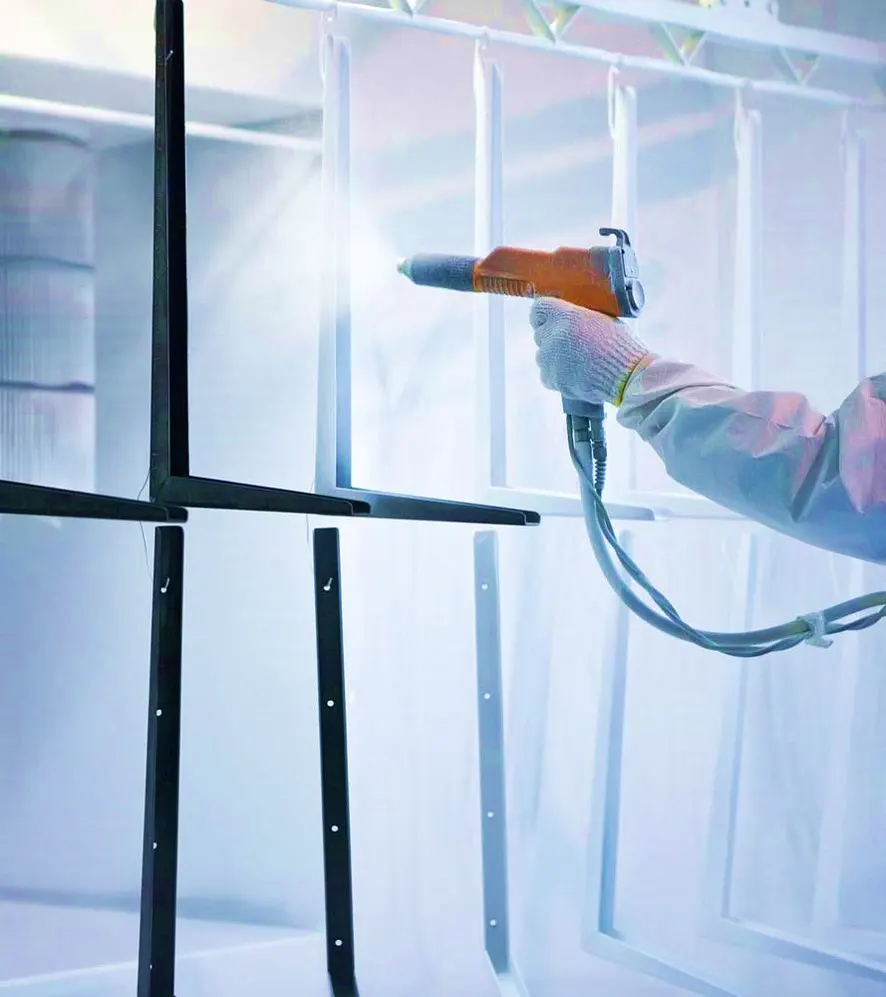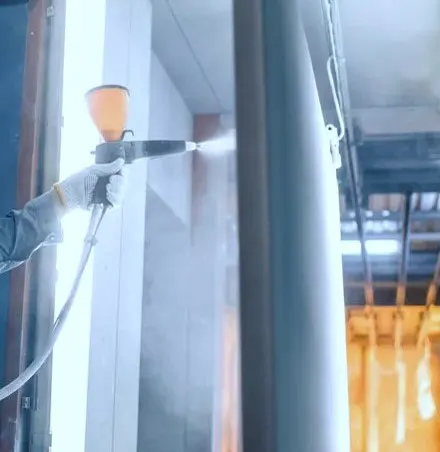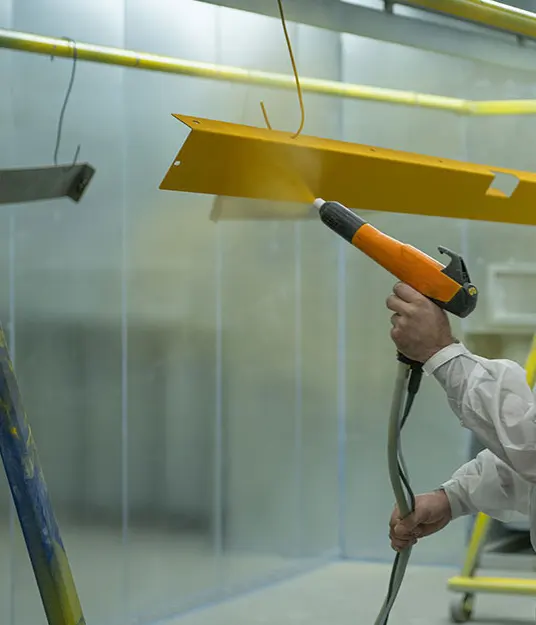Explore innovative designs, practical applications, and the numerous benefits of utilizing a wine barrel rack for your facility.
Read MoreMetal Coating Services: Enhancing the Durability and Aesthetics of Your Products
Metal coating services play a crucial role in enhancing the durability and aesthetics of various products. They provide a protective barrier against corrosion and rust, improve the appearance of the surface, and increase resistance to wear and tear. In this article, we will delve into the importance of metal coating services, the benefits they offer, the entire coating process, common applications, ensuring longevity, their environmental sustainability, and the future of metal coating services.
What are Metal Coating Services?
Metal coating services involve the application of a layer of protective material onto the surface of metal products. This coating acts as a shield, protecting the metal from environmental factors such as moisture, chemicals, and abrasion. It not only enhances the longevity of the product but also improves its appearance. In addition, various industries utilize metal coating services, including automotive, construction, aerospace, and manufacturing.

The Benefits of Metal Coating Services
Metal coating services offer several benefits that make them indispensable in various industries. Let’s explore some of the key advantages:
-
Protection against corrosion and rust: Metal surfaces are susceptible to corrosion and rust, which can degrade the product’s performance and appearance. Therefore, the use of coating is necessary to create a barrier that prevents moisture and environmental elements from coming into contact with the metal, thereby reducing the risk of corrosion and rust.
-
Enhanced durability and longevity: Metal coatings provide an extra layer of protection, making the product more resistant to scratches, abrasion, and other forms of damage. This enhanced durability increases the lifespan of the product, reducing the need for frequent replacements.
-
Improved appearance and aesthetics: This coating process can transform the look of a product, giving it a sleek and polished finish. Additionally, Coatings can be customized according to desired colors and textures, making the product visually appealing to consumers.
-
Increased resistance to wear and tear: Coating creates an enhancement to the product’s resistance against wear and tear caused by friction, heat, or chemicals. As a result, this ensures that the product can withstand severe use and maintain its performance over time.
Essential Tools for Industrial Powder Coating
Several tools are essential for an efficient powder coating process. These tools include:
- Powder Coating Gun: A high-quality powder coating gun is crucial for accurate and even application of the powder coating.
- Curing Oven: An oven with precise temperature control is needed for the curing process, ensuring the powder coating is properly melted and fused.
- Spray Booth: A well-designed spray booth provides a controlled environment for the application of powder coating, minimizing overspray and improving efficiency.
- Powder Reclamation System: A powder reclamation system helps recover and recycle unused powder, reducing waste and material costs.
The Process of Metal Coating
Metal coating involves a specific process that ensures proper adhesion and durability. Let’s take a closer look at the steps involved:
-
Surface preparation and cleaning: Before applying the coating, the metal surface needs to be properly prepared. This includes cleaning any dirt, grease, or contaminants that could hinder the adhesion of the coating. After all, surface preparation techniques can vary depending on the type of metal and during the application of the coating.
-
Application methods: The application of metal coatings involves using different methods, including spraying, dipping, and electroplating. Each method has its advantages and is suitable for specific applications. For example, spray coating is commonly used for large surfaces, while dipping is effective for smaller, intricate objects. In contrast, electroplating involves the deposition of a metal coating through an electrochemical process.
-
Types of metal coatings: There are several types of metal coatings available, each with unique characteristics and applications. First, there is powder coating, which involves applying a dry powder to the surface and then melted and bonded to the metal through heat. Second, there is electroplating, which involves depositing a thin layer of metal onto the surface through an electrochemical process. Third is anodizing, which creates a protective oxide layer on the surface of aluminum. Lastly, there is galvanizing, which involves coating the metal with a layer of zinc to protect it from corrosion.

Common Applications of Metal Coating Services
Metal coating services find applications in various industries. Here are a few sectors that commonly utilize metal coating:
-
Automotive industry: Metal coatings are extensively used in the automotive industry to protect car parts from corrosion and enhance their appearance. In essence, coatings on car bodies, wheels, and engine components improve aesthetics while providing protection against the elements.
-
Construction and architecture: This coating process is vital for protecting structures from corrosion, especially those vulnerable to harsh weather conditions. The utilization of this process is common within the construction of bridges, buildings, and other architectural elements, improving their durability and longevity.
-
Aerospace and aviation: Metal coatings are crucial for aircraft to withstand extreme temperatures, harsh chemicals, and corrosive environments. Consequently, the coating application for aircraft parts provide protection against wear and tear, ensuring safe and reliable operation.
-
Industrial manufacturing: This process plays a critical role in industrial manufacturing processes by protecting machinery and equipment from rust, corrosion, and abrasion. As a result, coatings enhance the performance and lifespan of components, minimizing downtime and maintenance costs.
-
Household appliances: Coating household appliances such as refrigerators, ovens, and washing machines improve both their appearance and durability. Therefore, this process will protect appliances from scratches, stains, and corrosion, making them more resistant to wear and tear.
Ensuring the Longevity of Metal Coatings
To maximize the lifespan and performance of metal coatings, proper maintenance and care are essential. Consider the following measures:
-
Regular maintenance and cleaning: Regularly clean metal-coated surfaces to remove dirt, dust, and contaminants. Also, don’t forget to use recommended cleaning products and techniques as specified by the coating manufacturer.
-
Proper handling and storage: Handle coated products with care to avoid scratches or damage. Store them in suitable conditions, away from moisture and extreme temperatures.
-
Monitoring for signs of wear and damage: Regularly inspect metal coatings for any signs of wear, peeling, or damage. If you detect any issues, then take prompt action to prevent further deterioration.
-
Prompt repairs and touch-ups: In case of minor damages or defects, consult with a professional service provider to assess the damage and perform necessary repairs or touch-ups. In fact, timely intervention can prevent further damage and extend the lifespan of the coating.

Metal Coating Services and Environmental Sustainability
The metal coating industry is increasingly adopting sustainable practices to minimize environmental impact. Several initiatives are being undertaken to promote environmental sustainability:
-
Water-based and eco-friendly coatings: Water-based coatings are gaining popularity as an alternative to traditional solvent-based coatings. These coatings have lower volatile organic compound (VOC) emissions and reduce the overall environmental impact.
-
Recycling and waste management practices: Metal coating service providers are focusing on recycling and proper waste management to minimize environmental pollution. Basically, recycling of metal waste helps conserve natural resources and reduce energy consumption.
-
Compliance with environmental regulations: As a metal coating service provider, the expectation is to comply with environmental regulations and standards. This includes proper disposal of hazardous waste, adherence to emissions limits, and responsible use of chemicals.
How Industrial Coating Services Work
Generally, industrial coating services include several steps to ensure their proper application and performance:
-
Surface preparation: Before applying the coating, the surface needs to be properly prepared to ensure good adhesion. This may involve cleaning, degreasing, sandblasting, or other methods of surface preparation.
-
Primer application: A primer is often applied before the actual coating to improve adhesion and provide additional corrosion protection.
-
Coating application: The coating is applied using various methods, including spraying, brushing, or dipping. The application method depends on the type of coating and the specific requirements of the project.
-
Curing or drying: After application, the coating needs to cure or dry properly to achieve its full properties. This may involve a specific temperature or time requirement.
-
Quality control: Industrial coating companies perform rigorous quality control measures to ensure that the coating meets the desired specifications. This may involve visual inspections, thickness measurement, adhesion testing, and other tests.
-
Surface finish: Depending on the desired appearance, a topcoat or clear coat may be applied to provide additional protection and aesthetic appeal.
Industrial Coating Services: Application and Techniques
Industrial coating services employ various application techniques to ensure the proper coverage and adhesion of coatings. Some common application techniques include:
-
Spraying: This is the most common application method, where the coating is sprayed onto the surface using specialized equipment. Spraying allows for even coverage and is suitable for large areas or complex shapes.
-
Brushing: Brush application is often used for smaller areas or detailed work where precision is required. It provides more control over the application and is suitable for touch-ups or areas that are difficult to reach.
-
Dipping: Dipping involves immersing the object being coated into a vat of the coating material. This method ensures complete coverage of all surfaces and is commonly used for small, intricate items.
-
Roller application: Roller application is ideal for large, flat surfaces where spraying is not feasible. It provides good coverage and is often used for coating floors, walls, and roofs.
-
Electrostatic spraying: Electrostatic spraying involves charging the coating material and the object being coated to achieve a more efficient and controlled application. This method is often used for metal objects to ensure an even and uniform coating.
The selection of the application technique depends on factors such as the type of coating material, the size and shape of the object being coated, and the desired finish.
Best Practices for Industrial Coating Services
To ensure the best results from industrial coating services, it is important to follow certain best practices:
-
Proper surface preparation: Thoroughly clean and prepare the surface before applying the coating to ensure good adhesion and performance.
-
Coating thickness: Follow the manufacturer’s guidelines to achieve the recommended thickness of the coating. Too thin or too thick coating can affect the performance and durability of the coating.
-
Appropriate drying and curing time: Allow sufficient time for the coating to dry or cure according to the manufacturer’s instructions. Rushing the process can lead to inadequate performance or premature failure of the coating.
-
Regular maintenance and inspection: Implement a regular maintenance and inspection schedule to identify and address any issues promptly. This will help maintain the integrity and longevity of the coating.
-
Use proper safety precautions: Follow appropriate safety protocols when handling and applying industrial coatings to protect yourself and others from potential hazards.
By adhering to these best practices, businesses can ensure the successful application and performance of industrial coatings, maximizing their benefits and return on investment.
Common Challenges in Industrial Powder Coating
Despite its many advantages, industrial powder coating can come with certain challenges. Some common challenges include:
-
Orange Peel Texture: Orange peel texture refers to an uneven or textured surface finish. It can occur due to issues with powder flow, curing temperature, or application technique.
-
Film Thickness Variation: Achieving a consistent and uniform film thickness can be challenging. Issues such as overspray, uneven powder distribution, or incorrect spray gun settings can lead to variations in film thickness.
-
Color Variation: Obtaining consistent color across multiple coated items can be difficult, especially with different batches. Factors such as powder composition, curing temperature, and variations in the application process can cause color variations.
-
Powder Waste: Overspray, powder buildup, and improper collection systems can result in powder waste, increasing production costs and impacting the environment.
The Future of Metal Coating Services
The future of metal coating services looks promising, with advancements in coating technologies and innovative solutions on the horizon:
-
Advancements in coating technologies: Coating technologies are continuously evolving to provide improved performance, durability, and efficiency. Innovations such as self-healing coatings, anti-microbial coatings, and anti-fingerprint coatings are being developed to meet specific industry demands.
-
Integration of smart coatings: The integration of smart coatings with sensors and other technologies is being explored. These coatings can provide real-time monitoring of the coating’s performance, alerting users to potential issues and allowing for timely maintenance.
-
Sustainable and green coating solutions: The industry is actively working towards developing sustainable and green coating solutions. This includes the use of bio-based materials, renewable energy sources in the coating process, and the reduction of waste and emissions.
Conclusion
Metal coating services are indispensable for enhancing the durability and aesthetics of products across various industries. By selecting the right service provider and ensuring proper maintenance, metal-coated products can withstand the test of time and perform at their best. Embrace the benefits of metal coatings and give your products the ultimate protection and visual appeal they deserve. The future of metal coating services holds exciting advancements and sustainable solutions that will further enhance the industry’s value.

Need Metal Coating Services? Get a FREE Estimate!
Simply e-mail us at sales@plexformps.com with all your information
OR call us today & speak to one of our packaging professionals









